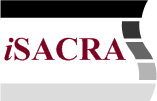The Examples of Quebec and Ontario
In Canada, education is considered a fundamental law for the common good. The Canadian Constitution Act takes precedence over all laws, policies, programs, and social services in Canada, including those on education. The Canadian Charter of Rights and Freedoms is a law that guarantees the right to equality, benefits, and protections of the law without discrimination, including without discrimination because of physical disability. Each province in Canada makes its own laws that comply with the Canadian Constitution Act. There are a few differences in the approach to special education between Quebec (mostly a French-speaking population) and Ontario (mostly an English-speaking population).
The Situation in Quebec
In Quebec, the Education Act provides everyone the right to education from age 5 to 18 years (or 21 years in the case of persons with disabilities). Quebec schools aim to educate, socialize, and qualify students so they can be successful with the school curriculum. The Policy on Special Education advocates first for the maximum academic success and maximum accessibility. This policy makes it possible for academic success to mean different things, depending on the capabilities and needs of students with disabilities. Six courses of action are provided for a supportive learning environment:
- Early detection of students at risk
- Adaptation of educational services
- Coordination of services for students with special needs
- Establishment of an educational community (school, student, parent, community stakeholders) that aligns student services
- Systemic view of the student’s situation (e.g., influence of personal, family, school, community, and social policies on the student)
- The evaluation of educational success and effectiveness of accommodations
After an individual assessment of capabilities and needs of the student (by a professional), school boards consider options for integration. Placement must favor learning and social integration of the disabled student while not overly interfering with the rights of other students. For students with sacral agenesis/caudal regression syndrome (SA/CRS), code 33 (for mild motor impairment) or 36 (for severe motor impairment) is applied. The assessment identifies nerve, muscular, or musculoskeletal damage affecting movement; daily living tasks (e.g., toileting, dressing, sitting at a desk); or mobility (physical education activities, school access). The school principal, with the support of teachers, parents, other stakeholders, and the student him- or herself, develop an individual treatment plan (ITP) outlining capabilities based on the initial assessment, priority needs, and specific objectives. Needs because of motor impairments could be:
- Integration of physical care in the school schedule (e.g., in the case of frequent need to take medication or receive nursing care)
- Physical access to certain places and accommodations for instruction with consideration of medical conditions (reduced concentration, persistent pain, anxiety) or frequent absences
- Regular assistance in performing activities of daily living (e.g., hygiene)
- Mobility aids (e.g., support or specialized equipment).
- Additional professional services on a regular or continuous basis
The Situation in Ontario
In the Ontario system, Bill 82, developed in 1980, provides for the inclusion of all children in the public education system in Ontario regardless of their abilities or disabilities. The Ministry of Education oversees education from preschool through twelfth grade. The Ministry of Education has had an equity and inclusive education strategy since 2009. The strategy says that all students, parents, and other members of the school community are welcomed and respected. Each student is supported and encouraged to succeed in a culture of high expectations for learning. The policy is based on the principles of promoting excellence, meeting individual needs, identifying and eliminating barriers, promoting a sense of belonging, and involving the broad community. The Ontario school boards offer free education programs for their students (including special assessments and accommodations) so students benefit from their school experience, meet Ontario requirements for learning, and acquire the skills necessary for social participation in Ontario. The Ministry of Education funds schools so they can provide the appropriate programs. Again, a special procedure must be followed. Students at risk are formally identified, and their placement is determined after an assessment by the Identification Placement and Review Committee (IPRC). The placement may be in a regular class with indirect support, a regular class with resource assistance or with pull-out assistance, a special education class with partial integration, or a full-time special education class. In the case of a student with SA/CRS, the IPRC could classify the disorder in the category of physical abnormalities—physical disability (for severe physical disabilities requiring special assistance to learning). An Individual Education Plan (IEP) must be written. The IEP puts the description of the educational program on paper. It contains expectations in education, strengths of the student, specific objectives, and a plan for educational services in accordance with the student needs. Generally, the student him- or herself (if age 16 years and older), parents, teachers, and school management staff are involved. The IEP accommodations may include instructional strategies, special seating placement in the classroom, specialized equipment, or modified learning expectations. The IEP must include the transition to appropriate activities at the end of the school curriculum, such as higher education and integration into employment or within the community.
Conclusion
As described, the Canadian educational system has extensive policies in place for students with disabilities. These policies continue to be beneficial for helping all students to develop to their fullest potential. Evaluation, accommodations, support services, and transition plans are important in fostering the greatest possible educational success for children with SA/CRS. Also, an important link between home and school is formed by ensuring that the family and the child are part of the educational planning team.
